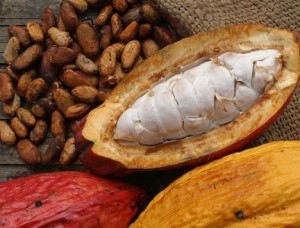
More evidence that low-calorie sweeteners are bad for your health
Studies show that artificial sweeteners can raise the risk of hypertension, metabolic syndrome, type 2 diabetes and heart disease, including stroke.

Most of us don’t pay much attention to how it’s spelled, but when it comes to chocolate there is a big difference in the order of those two little vowels.
Not surprisingly most of it comes down to the processing.
The cacao tree (Theobroma cacao) produces large colourful seed pods. Inside the pods are seeds, or cacao beans. The beans can be processed in several ways:
Whilst cocoa and cacao powders look the same they are nutritionally different because roasting at high temperatures removes vital enzymes, lowering the overall nutritional value of the powder.
Most of the studies showing chocolate’s amazing health benefits tend to be done using minimally processed cacao or dark chocolate which retains many cacaos’ benefits. They are definitely not done using highly processed Belgian or white chocolate which have no nutritional value.
While cacao is more expensive than cocoa it’s nutritional benefits are also greater.
Great health benefits
Raw cacao contains important minerals such as magnesium, iron, potassium, calcium, zinc, copper and manganese. It also has up to four times the amount of antioxidants of cocoa, and has one of the highest antioxidant activity ratings of all the natural plant foods. The high antioxidant activity of cacao is why even studies that include highly processed chocolate bars can show some benefits.
Specifically though there is evidence to show that cacao consumption can have a beneficial effect on blood pressure and on insulin resistance. Other evidence has shown that regular consumption of cacao products, naturally high in flavanols, may reduce risk of cardiovascular disease and stroke.
It is thought that the antioxidants found in cacao help to maintain healthy levels of nitric oxide (NO) in the body. Although NO has heart benefiting qualities, such as relaxing blood vessels and reducing blood pressure, it also produces free radicals as it is metabolised. The antioxidants in cacao help neutralise these free radicals, protecting your heart and preventing against disease.
There is some evidence that cacao can help protect the nervous system. That is because it is high in resveratrol, a potent antioxidant also found in red wine, known for its ability to cross your blood-brain barrier to help protect your nervous system. Studies show it can shield nerve cells from damage.
Consuming cacao can increase levels of certain neurotransmitters that promote a sense of calm and well-being. In fact, the same brain chemical that is released when we experience deep feelings of love – phenylethylamine – is found in chocolate
How to use cacao powder
Little research has been done on what happens when you heat cacao, though it is possible that some of the beneficial enzymes could be destroyed along with some of the antioxidant activity. You can retain those by using it in food preparations that require little or no heating.
Because it is so nutrient packed you don’t need much to get the benefits and some nutritionists suggest around 40g per day (around 4 heaped teaspoons) as a maximum because of the presence of the stimulant theobromine. Theobromine is related to caffeine but has around a quarter of the stimulating power. Even so it’s best not to overdo it.
The quickest and simplest way of using cacao powder is to add it into smoothies. Research suggests, however, that mixing cacao with dairy can inhibit the absorption of antioxidants. Instead, when making smoothies or shakes, try using coconut or nut milks instead of regular dairy.
You can also try making a demitasse ‘hot chocolate’ by mixing the powder with hot water and a little honey or agave to sweeten it. The result is an intense chocolate hit. You can also use it to make delicious superfood chocolate treats.

Please subscribe me to your newsletter mailing list. I have read the
privacy statement